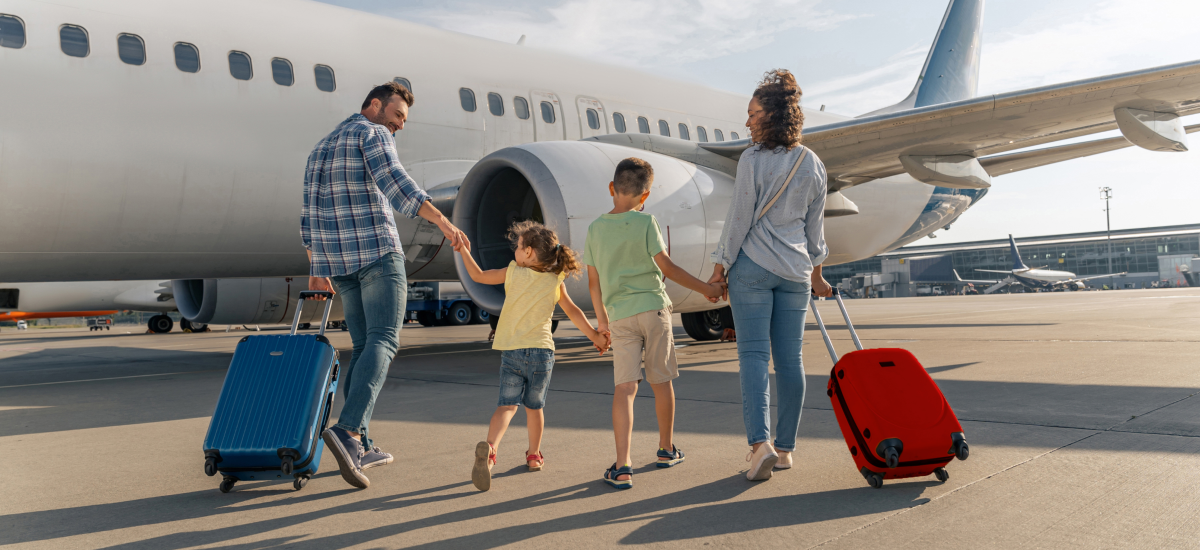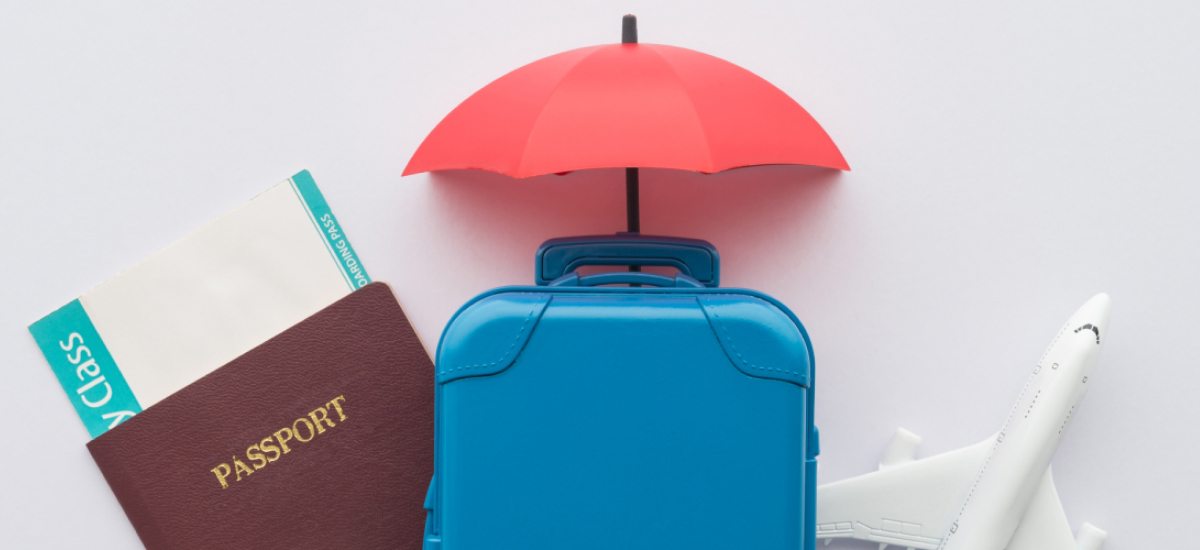Did you know that children are more likely to experience in-flight discomfort than adults? According to a study, 22% of young children are more prone to dehydration, ear pain due to cabin pressure changes, and disrupted sleep patterns during long-haul flights. If you’ve ever taken long haul flights with kids, you know that keeping them comfortable, entertained, and well-rested is no small feat.
But don’t worry! With smart pre-flight planning, in-flight strategies, and post-flight adjustments, you can turn what might seem like a stressful ordeal into a smooth, hassle-free journey. Here’s a detailed guide for long flight tips with kids.
Pre-flight planning
The secret to a smooth flight starts long before you board the plane. A well-planned approach can minimise tantrums, prevent boredom, and ensure your child stays comfortable throughout the journey. Also remember to get travel insurance for stress-free travel.
1. Choose the right flight timing
If possible, book an overnight flight. Kids are more likely to sleep through the journey, reducing the number of wakeful, restless hours in the air. If an overnight flight isn’t an option, try to schedule it around their usual nap time.
2. Select seats wisely
When booking, opt for seats that offer maximum convenience:
· Bassinet seats (bulkhead rows) – Ideal for infants, as many airlines provide baby bassinets.
· Aisle seats – Better for toddlers who need frequent restroom trips or leg stretching.
· Window seats – Great for kids who enjoy looking outside and have a cosy space to lean on.
3. Pack a kid-friendly travel kit
A well-packed carry-on bag can be a lifesaver. Essentials include:
· Snacks: Avoid sugary treats that can cause hyperactivity. Stick to healthy options like nuts, fruit slices, and crackers.
· Entertainment: Tablets with downloaded movies, colouring books, sticker activities, and small puzzles.
· Comfort Items: A favourite stuffed toy, a small pillow, or a blanket for familiarity.
· Medication: Any prescribed medicines, motion sickness tablets, and pain relievers.
· Change of Clothes: Spills and accidents are inevitable. Pack at least one change of clothes per child.
4. Talk to your kids about the journey
If your child is old enough to understand, explain what will happen during the flight. Let them know about security checks, seat belts, takeoff sensations, and expected flight duration to mentally prepare them.
In-flight engagement
Once onboard, keeping your child engaged and comfortable is the key to a stress-free journey.
1. Stick to a routine
Try to maintain their meal and sleep schedule as closely as possible. Adjust meal times slightly to match the time zone of your destination.
2. Keep them hydrated
Cabin air is dry, making children more susceptible to dehydration. Encourage them to sip water frequently. Avoid excessive juice and soft drinks, as they can cause sugar spikes.
3. Prevent ear pain during takeoff and landing
Children often experience ear discomfort due to cabin pressure changes. To ease the pressure:
· Give babies a bottle or pacifier to suck on.
· Have toddlers chew gum or sip on a drink through a straw.
· Teach older kids to perform the Valsalva maneuver (gently blowing while pinching their nose).
4. Rotate activities to avoid boredom
Long-haul flights can feel endless for a child. Plan a mix of activities to keep them engaged:
· First hour: Let them watch a movie or play with a tablet.
· Second hour: Engage in a colouring or sticker activity.
· Third hour: Read a book or tell a story.
· Nap time: Dim their screen, offer a blanket, and encourage sleep.
· Repeat as necessary.
5. Let them move around
Sitting still for long hours can be frustrating. If the seatbelt sign is off, take them for a short walk down the aisle or let them stretch near the lavatory area.
6. Handle tantrums calmly
No matter how well you prepare, mid-air meltdowns can happen. Stay calm, use distraction techniques, and avoid scolding in front of strangers—it often makes things worse. Instead, offer comfort and reassurance.
Post-flight adjustments
The journey doesn’t end when the plane lands. Helping your child adjust post-flight is just as important.
1. Deal with jet lag proactively
Jet lag can be tough on kids. To ease the transition:
· Expose them to natural light to reset their internal clock.
· Adjust meal and sleep schedules gradually.
· If they arrive at night, put them to bed immediately. If they arrive in the morning, keep them awake and active.
2. Prioritise rest and recovery
Long flights are exhausting. Give your child a break before jumping into sightseeing or activities. If they’re extra cranky, allow them a nap, but don’t let them sleep too long during the day.
3. Check for any health concerns
If your child complains of ear pain, nausea, or fatigue even hours after the flight, monitor them closely. Dehydration, ear infections, and mild motion sickness are common post-flight issues.
4. Retrieve luggage and essentials efficiently
· Keep kids close at baggage claim to avoid getting separated in crowded areas.
· Double-check that you have everything before leaving the airport, especially passports and essential travel items.
· International travel insurance can help replace essentials and lost items so you can travel stress-free.
Final thoughts
Long flights with kids can be challenging, but with the right preparation, they don’t have to be stressful. A well-thought-out pre-flight strategy, in-flight engagement, and post-flight adjustments can make the journey much smoother.
To travel worry-free, consider Generali Central for your International travel insurance needs. From medical emergencies to lost baggage, their comprehensive coverage ensures peace of mind for you and your family. Secure your next trip today with travel insurance online and make flying with kids a stress-free experience!
FAQs
1. What’s the best age to start flying with a child?
There’s no fixed rule, but most airlines allow infants as young as two weeks old. However, many parents find that six months and older is easier for long haul flights since babies develop better sleeping patterns.
2. Can I bring my baby’s formula or food on long haul flights?
Yes! Most airlines allow baby formula, breast milk, and baby food in reasonable quantities, even beyond standard liquid restrictions. Carry them in clear, labelled containers.
3. How can I prevent my child from getting sick on a flight?
A few long flight tips to prevent sickness are:
· Wipe down tray tables, armrests, and seat belts with disinfectant wipes.
· Encourage frequent hand washing or use sanitiser.
· Avoid aisle seats where kids may come in contact with more people.
4. What if my child refuses to sleep on long haul flights?
Keep a calm and dark environment by dimming screens and using a blanket. Avoid overstimulating activities close to bedtime. If all else fails, let them rest with eyes closed—it still helps.
5. Can I carry medicine for my child on the flight?
Yes, prescribed medication is allowed. Keep it in its original packaging and carry a doctor’s note for liquids exceeding the limit.



















